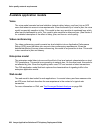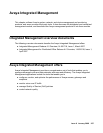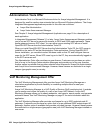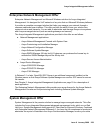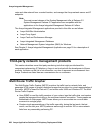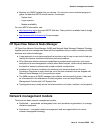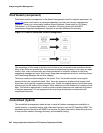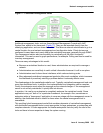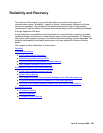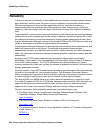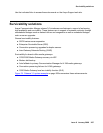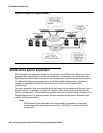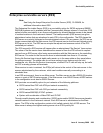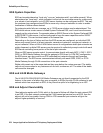
Network management models
Issue 6 January 2008 263
Figure 77: Centralized management model
Additional management tools, such as Avaya Network Management Console with VoIP
SystemView, attach to the framework (Figure 77
). They can be launched directly from the
underlying application, and can share data with it. This allows a network administrator to go to a
central location for most network management and configuration tasks. Client devices are
configured to send alarm and event data to the centralized manager, generally through SNMP.
The management station also has the ability to periodically poll the client for specific
information. This can be used to graph performance, for example. Polling can also be used for
inventory management.
There are many advantages to this model:
● Because a centralized location is used, fewer administrators are required to manage a
network.
● Administrators are more likely to catch critical information because it is all in one place.
● Administrators need to learn fewer interfaces, which reduces training costs.
● More advanced centralized management products offer event correlation, which increases
the likelihood of proactively catching a problem before it adversely affects users.
The disadvantage to the centralized model is cost. Typically, centralized management tools cost
more than distributed tools. In addition, the implementation and integration can be complex.
Finally, the enterprise must adjust the manager as the network changes. If the management
server is not actively maintained, it quickly falls into disuse.
In practice, it is rare for an enterprise to completely embrace the centralized model. Some
applications may not “bolt on” to a particular framework, for example. Also, sometimes an
enterprise writes a “homegrown” application to cover an outage with the management server. In
addition, the distributed model is useful for times when the central management tool is
unavailable.
This resulting hybrid management model that combines elements of centralized management
with distributed management tools is most appropriate for large enterprises, or enterprises with
complex networks. It is also appropriate for smaller enterprises that can justify the cost of the
tools and have in-house expertise to keep the system running.




